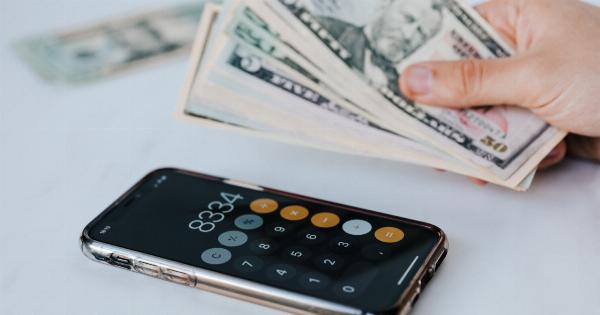Smartphones have become an essential part of our daily lives, providing us with instant access to information, communication, and entertainment. However, the increasing reliance on these devices has led to a growing concern – smartphone addiction.
Many individuals find it challenging to detach themselves from their smartphones, leading to negative consequences on their mental health, productivity, and relationships. In this article, we will explore strategies to break the cycle of smartphone addiction and regain control over our lives.
The Rise of Smartphone Addiction
In recent years, smartphone addiction has been recognized as a significant problem affecting people of all ages.
According to a study conducted by the Pew Research Center, over 90% of adults in the United States own a smartphone, with the average user spending almost 3 hours on their device each day. This excessive usage has led to concerns about the impact it has on our mental and emotional well-being.
The Dangers of Smartphone Addiction
Excessive smartphone use can have detrimental effects on various aspects of our lives. From a psychological perspective, smartphone addiction can contribute to increased anxiety, depression, and stress.
The constant need to check notifications, social media updates, and digital content creates a sense of dependence, leading to a never-ending cycle of seeking validation and connection from our devices.
Furthermore, smartphone addiction can negatively impact our productivity.
Research shows that the constant interruptions caused by notifications and the allure of social media contribute to decreased focus, reduced efficiency, and impaired concentration. This can hinder our ability to complete tasks effectively and result in a decline in overall work performance.
Additionally, smartphone addiction takes a toll on our relationships. Excessive screen time can lead to decreased face-to-face social interactions and a lack of engagement with the people around us.
It hinders our ability to connect with others on a deeper level and can strain personal relationships.
Recognizing the Signs of Smartphone Addiction
Before we can break the cycle of smartphone addiction, it is vital to recognize the signs and symptoms. Here are some common indicators that you may be struggling with smartphone addiction:.
1. Constant checking:
If you find yourself repeatedly checking your smartphone for notifications, even when there are no alerts, it may be a sign of addiction. The urge to constantly stay updated and connected can interfere with your daily life and thought patterns.
2. Neglecting responsibilities:
If your smartphone usage is interfering with your ability to fulfill work, school, or household obligations, it is a clear sign that addiction is present.
Neglecting important tasks and responsibilities for more screen time indicates a lack of control over your smartphone usage.
3. Relationship strain:
If your relationships with friends, family, or significant others are suffering due to excessive smartphone use, it is a red flag.
Constantly checking your device during conversations or neglecting quality time with loved ones indicates a significant dependence on your smartphone.
4. Withdrawal symptoms:
Experiencing anxiety, irritability, or restlessness when unable to access your smartphone is a classic sign of addiction. These withdrawal symptoms indicate a psychological and emotional reliance on the device.
Breaking Free from Smartphone Addiction
If you resonate with any of the signs mentioned above, it’s time to take charge of your relationship with your smartphone. Here are some strategies that can help you break free from smartphone addiction:.
1. Set boundaries:
Establish specific boundaries for your smartphone usage. Designate certain times or areas where you will not use your device, such as during meals or before bedtime. Stick to these boundaries consistently to create a healthier balance in your life.
2. Disable unnecessary notifications:
Notifications can be major distractions and temptations to constantly check your smartphone. Review your notification settings and disable unnecessary alerts to minimize interruptions and regain control over your attention.
3. Use smartphone tracking apps:
There are several smartphone tracking apps available that can help you monitor and limit your screen time. Set goals for yourself and use these apps to track your progress and identify areas where you need to cut back on smartphone usage.
4. Practice digital detox:
Allocate specific periods, such as weekends or vacations, for complete disconnection from your smartphone. Engage in activities that don’t involve screens, such as exercising, reading, or spending quality time with loved ones.
This break from technology will help you reset and refocus on the present moment.
5. Establish no-phone zones:
Create designated areas in your home or workplace where smartphone use is strictly prohibited. For example, you can designate your bedroom as a sanctuary free from screens, allowing you to have uninterrupted sleep and promote overall well-being.
6. Find alternative activities:
Replace excessive screen time with healthy and fulfilling activities. Explore hobbies, engage in physical exercise, or join social groups that foster face-to-face interactions.
Finding alternative activities will redirect your focus and reduce reliance on your smartphone.
7. Seek support:
If you find it challenging to break free from smartphone addiction on your own, don’t hesitate to seek support.
Reach out to friends, family, or mental health professionals who can provide guidance, encouragement, and accountability throughout your journey.
8. Practice mindfulness:
Mindfulness is an effective tool for combating smartphone addiction. By focusing on the present moment and being aware of your thoughts and emotions, you can better recognize and manage the impulse to constantly reach for your device.
9. Prioritize self-care:
Invest time in self-care activities that promote your overall well-being. Engage in practices such as meditation, journaling, or spending time in nature.
Prioritizing self-care will help alleviate stress and reduce the reliance on using your smartphone as a coping mechanism.
10. Reflect on your values:
Take a moment to reflect on your values and what truly matters to you. Remind yourself of the importance of genuine human connections, personal growth, and a healthy work-life balance.
Aligning your actions with your values will guide you towards a healthier relationship with your smartphone.
Conclusion
Smartphone addiction is a growing concern in our modern society, but it is possible to break free from its grasp.
By recognizing the signs of addiction and implementing strategies such as setting boundaries, practicing digital detox, and seeking support, we can regain control over our lives and foster healthier relationships with our smartphones. Let us strive to use technology consciously and mindfully, ensuring that it enhances our lives rather than diminishes them.

























